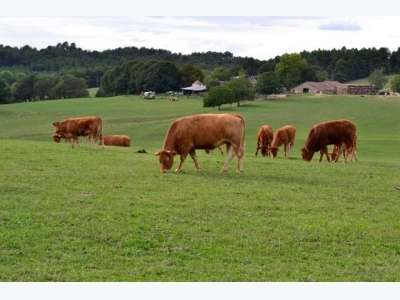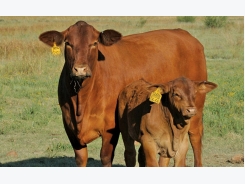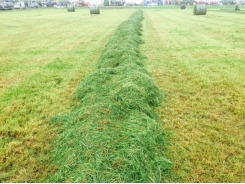Making grass silage while the sun shines

Although not commonly practised in South African dairy farming, grass silage production is likely to take off as dairy enterprises expand. Wim Hofman, cattle specialist at De Heus Animal Nutrition of the Netherlands, explains how to make quality grass silage.
While the principles of grass silage production and maize silage production are the same, this important task is arguably one of the most challenging to master. Mistakes made in the ensiling process can prove expensive, leading to unusable or low quality silage, according to Wim Hofman, cattle specialist at Dutch animal nutrition company De Heus.
Poor quality silage is of sub-optimal nutritional value, reduces the intake of dairy cows and lowers milk production. It can also cause sub-acute ruminal acidosis. Common sense tells the farmer that the better the quality of the grass, the better the quality of the silage. There are significant differences between the nutritional value of fresh ryegrass and its grass silage when the ryegrass is cut late in the growth cycle, with too much stem and too little leaf. Digestible organic matter dropped by a significant 20% and energy values also differed.
In comparing dairy nutrition quality and its effect on milk production, De Heus uses the standard, where 460 VEM (feed units milk) is needed to produce 1l milk. Low sugar content in ryegrass has a negative effect on silage quality. In this case, lower quality fresh ryegrass led to lower quality silage.
“Energy is lost if silage is allowed to heat up excessively in the pit, and protein is lost if silage rots and releases ammonia. Poor quality grass silage can lead to high levels of butyric acid in the milk, making it difficult for the processor to produce quality products,” says Wim.
Grass silage provides better quality silage than hay and is less weather-dependent, as rain can set the hay-making process back. Grass mown for hay must dry to a DM level of 80% before baling, while grass cut for silage can have a high moisture content. In the southern hemisphere, grass cut for silage can be picked up within 24 hours, which means low nutrient loss between mowing and ensiling. Grass silage-making is also less labour-intensive than hay-making.
When to mow
Timing is critical in silage making. Cut grass at the three-leaf stage of its growth, or at 30cm. Getting the balance right means taking advantage of leafy, more digestible material and getting bulk into the pit. In this way, the farmer can manipulate the feeding value of the silage. Sugars of 2% to 3% in fresh grass mean sugars of 10% to 15% in the DM. Fermentation losses are low in pasture, which is above 25% DM, and grass should not be drier than 45% DM. The optimum DM content for cut grass going into the pit is between 35% and 45%.
“Don’t cut it shorter than 6cm as this will reduce the regrowth. Ideally, grass should be cut into short lengths by a chopper harvester.”
This is an abbreviated version of an article in Farmer’s Weekly 7 February.
Related news
Tools

Phối trộn thức ăn chăn nuôi

Pha dung dịch thủy canh

Định mức cho tôm ăn

Phối trộn phân bón NPK

Xác định tỷ lệ tôm sống

Chuyển đổi đơn vị phân bón

Xác định công suất sục khí

Chuyển đổi đơn vị tôm

Tính diện tích nhà kính

Tính thể tích ao



 Dealing with clostridial diseases (2)
Dealing with clostridial diseases (2)  Making the most of grass silage
Making the most of grass silage